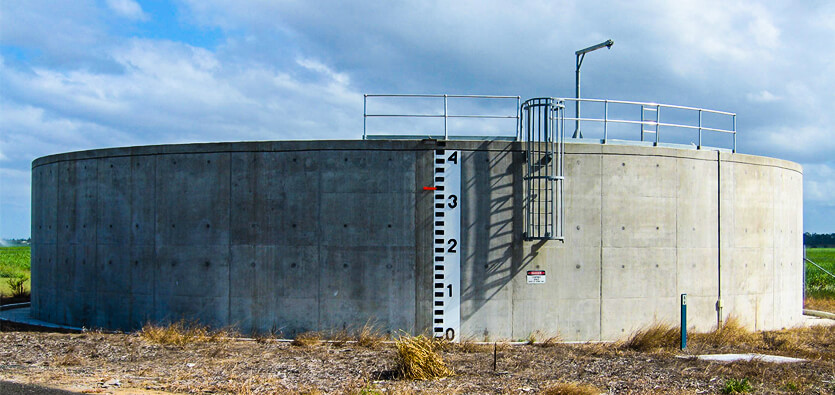
Concrete is an incredible building material which engineers have been using for centuries to build all kinds of structures. The civil engineers started using reinforced concrete in the 1800s. Since that time, the construction industry has taken full advantage of reinforced concrete and its properties. Wastewater tanks and other water management facilities are largely built with reinforced concrete.
Unfortunately, the use of steel as concrete reinforcement gave birth to a new problem called corrosion. The corrosion of reinforcement can seriously affect the durability and service life of a structure. When the steel reinforcement corrodes, it can lead to cracking and spalling. The concrete spalling and cracking not only allow deleterious elements to penetrate through concrete but also damage the structural integrity.
Water treatment facilities are sensitive structures subject to the harsh environment. Freeze-thaw, abrasion, and chemical attacks are some of the reasons why waterside structures corrode. The ideal technique is to reinforce water tanks with corrosion-free materials such as fiber reinforced polymer (FRP). There are thousands of water tanks built with traditional materials in the 70s. As these tanks enter their fourth and fifth decade of service, the deterioration of the reinforced steel starts to become apparent. The damaged layer of concrete accelerates the deterioration process as corrosive elements easily find a way into the concrete.
As mentioned earlier, corrosion is the most common cause of deterioration of concrete tanks. The steel reinforcement corrodes in the presence of oxygen and moisture. In the water treatment facilities, chlorides in the contained water enter through the concrete and damage the passivating layer, a natural protective oxide layer around the reinforcement. The quality of concrete also plays a crucial role in protecting the reinforcement from an aggressive environment.
For structures that contain wastewater, the reinforcing rebar must be able to withstand the harmful effects of the particular chemicals present in the contained water. Coating is a traditional method engineers use to protect concrete. However, traditional materials and construction techniques cannot adequately address the aggressive environment and corrosive agents. Municipalities around the globe spend heavy resources to replace and rehabilitate corroded RC tanks.
Traditionally reinforced concrete tanks have been largely used in municipal and industrial facilities for water treatment plants for years. There are three major kinds of water tanks; underground tanks, tank resting on the ground, and elevated tanks. The underground tank is the most common type used in wastewater treatment plant. The design of these tanks requires attention when it comes to corrosion of steel reinforcement, crack control, and strength requirements.
Researchers and structural engineers are looking for innovative and sustainable solutions that can provide longer service life with minimum maintenance and repair. The FRP reinforcing bars is one such innovation which is rapidly becoming a promising alternative for RC water tanks. Because of corrosion resistance, cost-effectiveness, and improved strength, FRP composites have turned out to be a great alternative to steel reinforcement. Zero corrosion, superior tensile strength, neutrality to electrical and magnetic disturbances, and high strength-to-weight ratio make GFRP rebar a perfect material for water tanks and other sensitive waterside concrete structures.
Related: The Application of GFRP Rebar in Water Facilities: A Case Study
TUF-BAR is one of the largest producer and seller of GFRP fiberglass rebar in North America. Being a proud member of Canada Green Building Council, we focus on producing environment-friendly and sustainable construction products which include fiberglass rebar, rock bolts, form ties, and concrete anchors. Visit our site to know more about our products and their applications.
